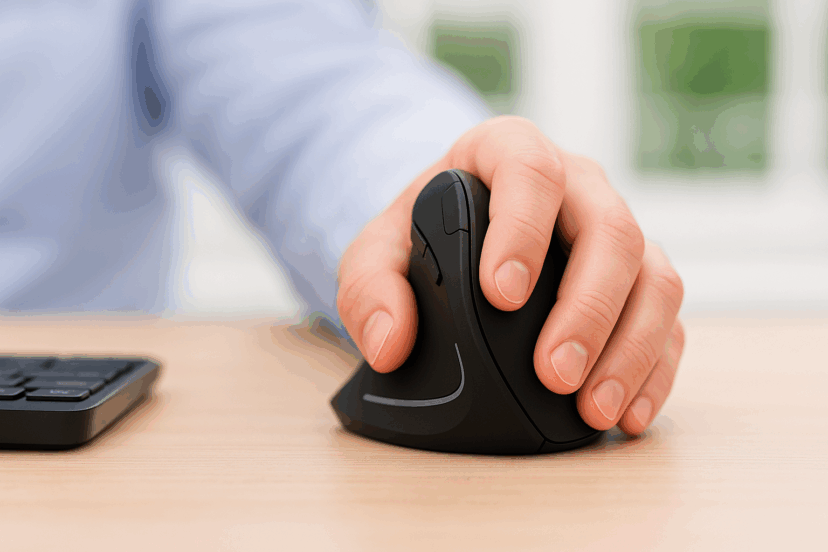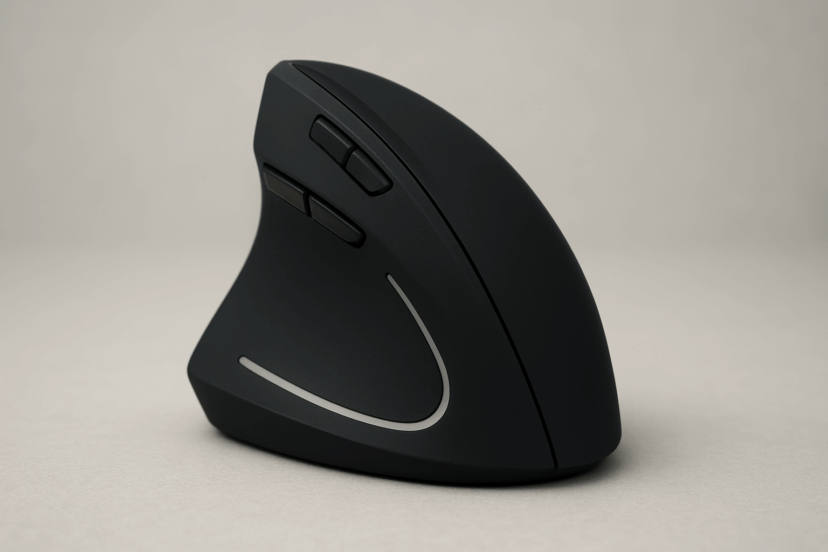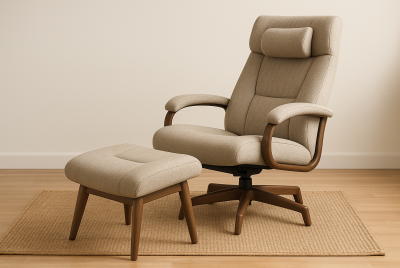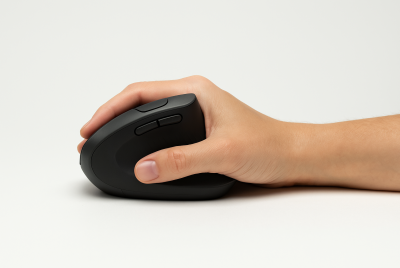Best Left-Handed Ergonomic Mouse in 2025
We may earn a commission for purchases made using our links. Please see our disclosure to learn more.
You know that dull ache in your wrist after a long day at your desk? The one you tell yourself is just part of being productive? If you’re left-handed, chances are you’ve spent years adapting to a world that wasn’t built for you—and your wrist is paying the price. But what if I told you something as small as switching to a left-handed ergonomic mouse could change everything?
You’ve Been Overlooked, But You’re Not Alone
As a lefty, it’s easy to feel invisible in tech spaces. Mice, keyboards, and even desk setups are made with right-handed users in mind. You might have shrugged it off, using whatever was available. But deep down, you’ve probably felt it—the strain, the clumsiness, the frustration of trying to work efficiently with tools that don’t fit you. I’ve been there too.
That Turning Point You’ve Been Waiting For
There comes a moment—maybe it’s mid-scroll during a long workday, or after hours of editing—that you realize: this pain isn’t normal. You pause, shake out your hand, and start wondering, “Isn’t there a better way?”
There is. And it starts with choosing comfort. Choosing tools designed for you.

The Three Changes That Can Transform Your Workspace
1. Switching to a Left-Handed Ergonomic Mouse
The first step is giving your dominant hand the attention it deserves. When you pick up a true left-handed ergonomic mouse—like the Logitech Lift Left Vertical Mouse—you immediately feel the difference. The handshake-style grip keeps your wrist in a more natural position, reducing strain and pressure on your tendons.
You might struggle the first few days. Your muscle memory will want to reach to the right. You’ll click the wrong buttons. But keep going. After a week, it starts to feel right—finally right.
And suddenly, those long sessions at the computer? They’re not so painful anymore.
2. Reconfiguring Your Desk to Work With You
Take a good look at your current setup. Is your mouse shoved to the right side because that’s where everyone else puts theirs? Is your workspace laid out for a right-handed person by default?
Now imagine mirroring your setup—placing your mouse on the left, shifting your notepad within reach, and rerouting cables so they don’t cross your arm.
It might feel strange at first, but you’ll be amazed how quickly your body adjusts. You’ll move more smoothly. Your desk will finally belong to you.
3. Supporting Your Wrist and Arm the Way They Deserve
Even with a great mouse, if your wrist is hanging off the edge of the desk, you’re not doing yourself any favors. Try adding a memory foam wrist rest—one that supports without restricting. Pair it with a keyboard tray or adjustable armrests to keep your forearms at a natural angle.
Yes, you’ll experiment. Some rests are too squishy. Others too firm. But when you find the right combo, your whole body breathes a little easier.
Top 5 Left-Handed Ergonomic Mice for 2025
Looking to relieve wrist pain and finally feel at home at your desk? Here are five standout left handed ergonomic mouse options to consider:
- Logitech Lift Vertical Ergonomic Mouse (Left-Handed)
Comfort meets simplicity—this vertical mouse supports a natural grip and smooth wireless performance. - Evoluent VerticalMouse 4 Left
Designed with serious ergonomics in mind, it’s perfect for professionals who want precision and support. - Delux Ergonomic Vertical Mouse (Left-Handed Version)
Affordable, quiet, and uniquely sculpted for lefties—great for work or casual use. - MEETION Left-Handed Ergonomic Wireless Mouse
Rechargeable and sleek, this wireless vertical mouse offers adjustable DPI and a smooth feel—ideal for everyday use. - Perixx PERIMICE-713L Wireless Ergonomic Mouse
A budget-friendly, easy-to-use option with left-handed curvature and thumb support.
Common Left-Handed Ergonomic Challenges (And How to Beat Them)
Here’s what might be holding you back—and what to do about it:
- Limited product options: It can feel like everything’s made for righties. Look for brands that specifically offer left-handed ergonomic mice. Avoid ambidextrous designs that compromise comfort.
- Awkward button placement: Some mice flip the design without considering usability. Read reviews. Watch videos. Test if you can.
- The adjustment period: You won’t love your new setup on day one. But you’ll love how you feel after two weeks of use.
- Cost concerns: Ergonomic tools can be pricey. Start small. Upgrade one item at a time.
- Doubt: If you’re wondering, “Is this really worth it?”—just ask your wrist how it feels at the end of the day.
What to Look for in a Left-Handed Ergonomic Mouse
When shopping, keep these features in mind:
- True left-handed orientation — not just mirrored design
- Vertical grip or angled body — to relieve wrist pressure
- Customizable buttons — especially helpful for gaming, design, or workflows
- Adjustable DPI/sensitivity — for fine-tuned cursor control
- Wireless connectivity — to eliminate drag and clutter
Tips for Making the Switch
Here’s how to ease into your new ergonomic lifestyle:
- Give it time. Try the new mouse for at least 7–10 days before making a judgment.
- Mirror your layout. Place everything on the left that used to be on the right.
- Do wrist stretches. A few minutes a day can make a huge difference.
- Keep receipts. If something doesn’t feel right, return it and try something else.
- Celebrate progress. The first day you don’t feel wrist pain? That’s a win.
Scientific Support for Left-Handed Ergonomic Mouse Use
Scientific research highlights the clear ergonomic advantages of adapting tools for left-handed users. One study published in Applied Ergonomics showed that using a vertical ergonomic mouse can significantly improve wrist posture without compromising productivity. Another study found that left-handed mouse usage helps reduce musculoskeletal discomfort by minimizing shoulder and wrist strain through more natural arm positioning.
The Ripple Effect of Ergonomics
Once your hand feels better, something magical happens: your mood lifts. You stop dreading work. No more ending your day irritable and exhausted. And you may even notice better posture, better sleep, or more focus.
It’s not just about the mouse. It’s about how you feel as a whole human being.
Reflect: What Could You Change Today?
Pause for a moment. Ask yourself:
- Is your workspace helping or hurting you?
- Have you normalized discomfort because it was “easier” than finding a better fit?
- What would your ideal left-handed desk setup look like?
You don’t need to make a complete workstation or home office revamp right away. Just start with one change—and let that be the first step toward a more comfortable, efficient, pain-free workflow.

Join the Left-Handed Ergonomics Movement
There’s a growing community of left-handed professionals, gamers, and creators out here redesigning the workplace to fit us. You don’t have to settle for awkward tools or ignore your comfort anymore.
Share your setup. Post your story. Tag it with #LeftHandedComfort or drop a comment with your favorite ergonomic gear. Let’s build this together.
Final Words of Encouragement
You deserve comfort. You deserve tools that honor how you work. Switching to a left handed ergonomic mouse isn’t just a smart decision—it’s a powerful shift in how you treat your body and value your time. So go ahead. Make that upgrade. Reclaim your space. You’ve got this.
And if you’re still wondering whether it’s worth the effort? Just wait until the first time you finish your day with no wrist pain. That moment? It’s everything.
Want to keep optimizing your setup? Check out our guide to the best ergonomic chairs to support your posture from head to toe.
FAQs
1. Are left-handed ergonomic mice better than ambidextrous ones?
Yes. They’re shaped specifically for your left hand, offering more comfort and support than symmetrical ambidextrous designs.
2. How long does it take to get used to one?
Give it about 7–10 days. It feels strange at first, but your hand will adjust quickly with daily use.
3. Can I use it at a shared desk?
Definitely. Just keep a right-handed mouse nearby or choose one with switchable profiles for multiple users.
4. Are there affordable options?
Yes. Brands like Logitech and Perixx offer solid left-handed mice without breaking the bank.
5. Will it actually help with wrist pain?
It can make a big difference. The ergonomic shape supports your hand better, easing tension and strain over time.




